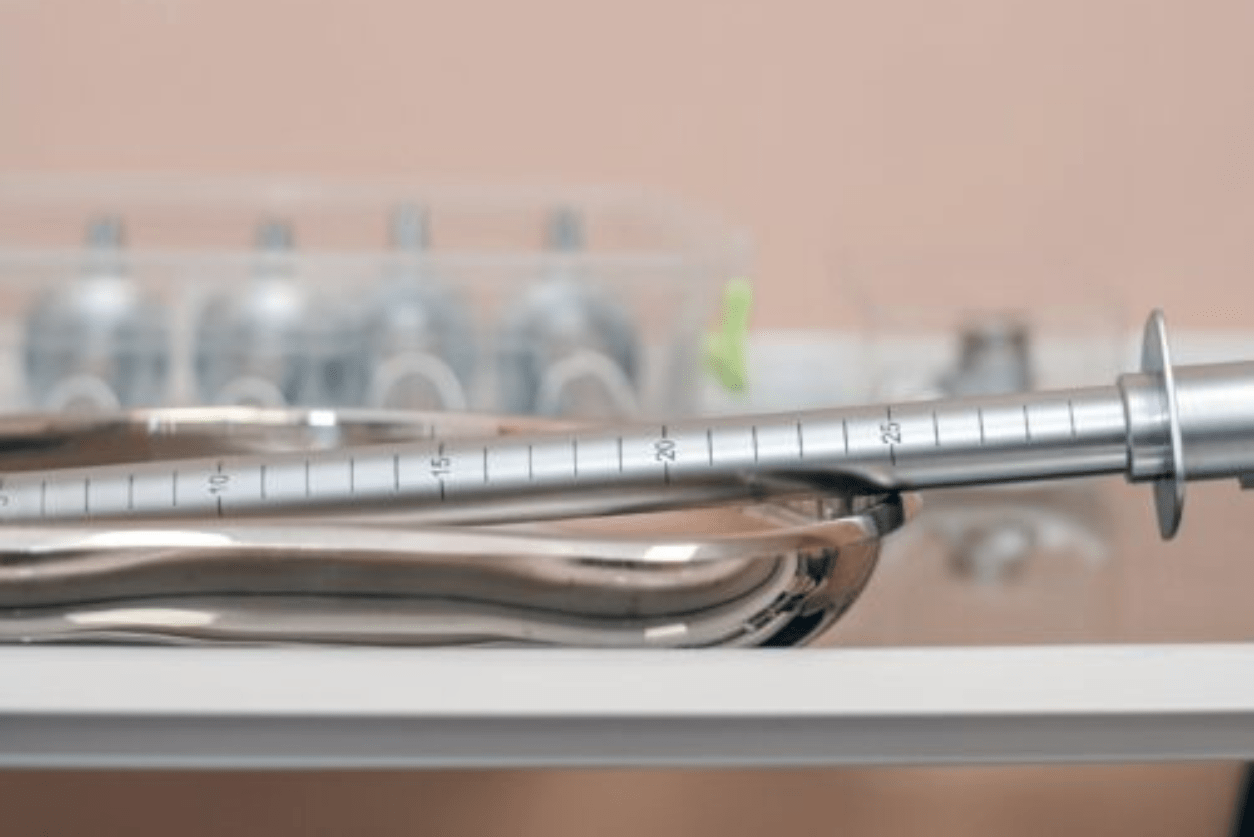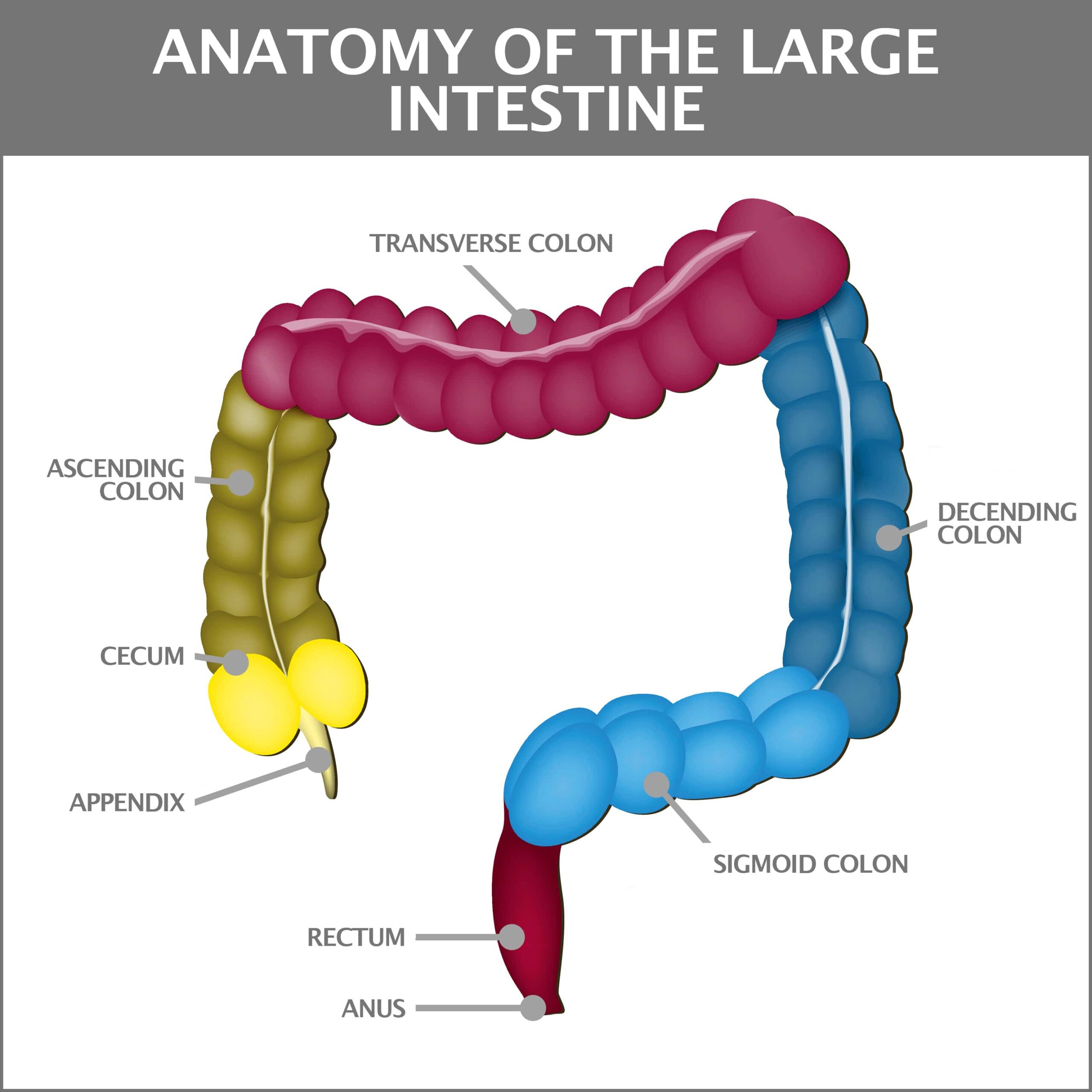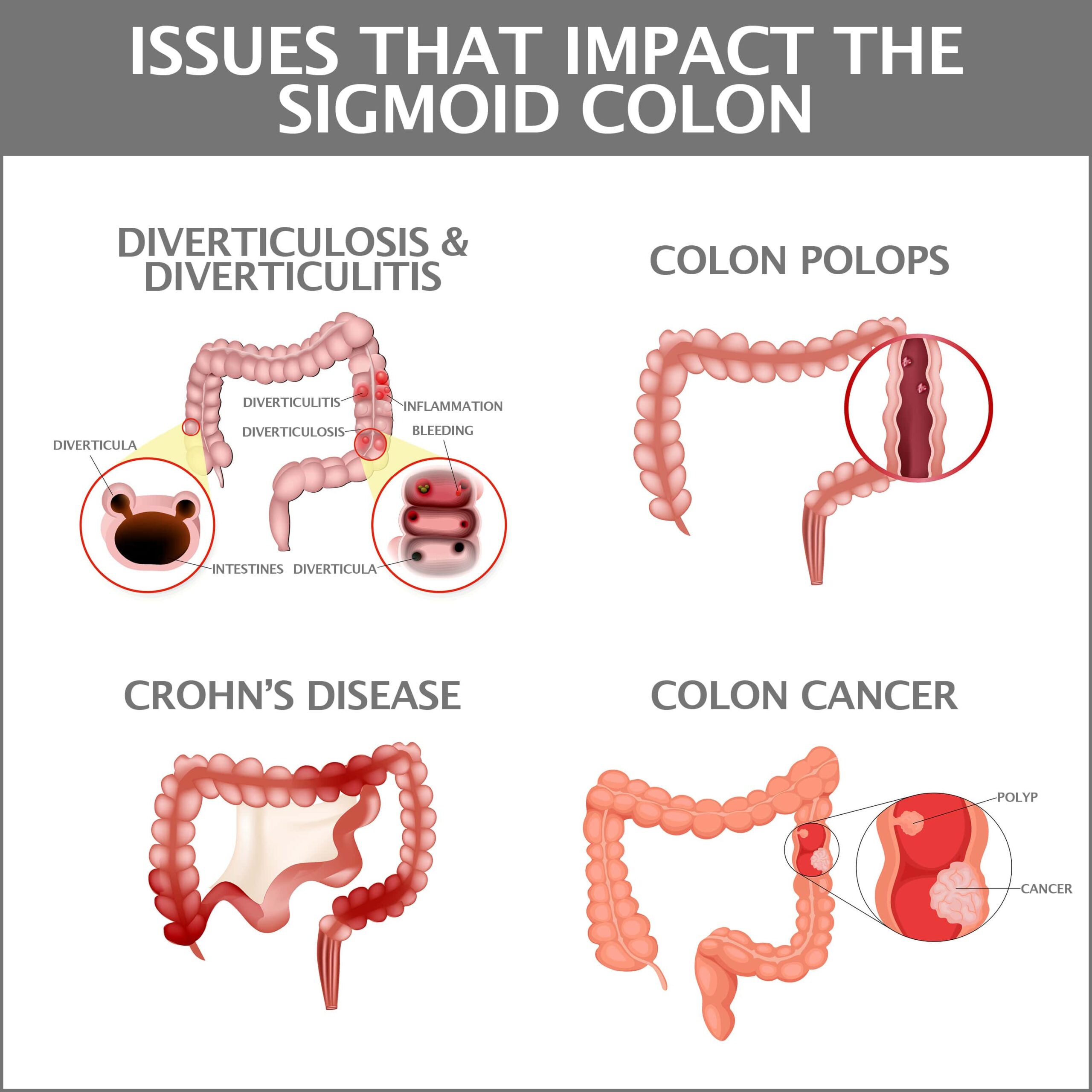
Sigmoidoscopy Procedure
The colon is a critical part of your gastrointestinal tract. This organ, also known as the large intestine, is divided into several sections. One part is labeled the sigmoid colon. When doctors suspect problems in this area, they might order a diagnostic procedure called a sigmoidoscopy.
The Sigmoid Colon
The sigmoid colon is the large intestine’s lowest part. It is a long tube-shaped structure surrounded by muscles responsible for storing fecal matter until you are ready to expel it.

Issues That Impact the Sigmoid Colon
Many issues can impact the sigmoid colon’s health, function, and structural makeup. Some of the more common concerns include:
- Polyps: Polyps are tiny growths developing inside the colon. In most cases, these masses do not cause symptoms. When left untreated, they carry the potential to turn into cancer.
- Inflammatory Bowel Disease: This condition, commonly abbreviated as IBD, is used to describe illnesses capable of causing inflammation within the colon and other components situated within the digestive tract. Such diseases also disrupt the colon’s structural makeup and could increase your risk of developing cancer. The most common IBDs are Crohn’s Disease and ulcerative colitis.
- Diverticulitis: This condition is characterized by the development of small and potentially painful pouches called diverticulum. Occasionally, these abnormalities become inflamed and can precipitate any number of uncomfortable to potentially dangerous digestive problems.
- Cancer: Cancer develops when abnormal cells grow and multiply within the sigmoid colon. In many instances, malignancies develop slowly, and you do not encounter symptoms until the disease has progressed to a moderate or advanced stage. Occasionally, malignancies beginning in other parts of the body can spread into the colon.

Symptoms of a Sigmoid Colon Concern
The symptoms impacting the sigmoid colon can vary in occurrence and intensity based upon the specific underlying cause and the condition’s severity.
Each issue can produce common symptoms, including:
- Appetite loss.
- Nausea.
- Vomiting.
- Diarrhea.
- Constipation.
- Lower abdominal discomfort.
- Gas.
- Weight loss.
You could experience more significant or potentially life-threatening events such as bleeding and bowel obstruction when certain ailments progress.
Sigmoidoscopy
Should your doctor suspect that you might have some type of sigmoid colon-related issue, they can order a diagnostic test known as a sigmoidoscopy. During this procedure, your gastroenterologist examines the sigmoid colon.
Preparation
There are certain steps you will be asked to complete in preparation for the exam.
Your colon must be as empty as possible when the test is administered for the most accurate results. Your doctor will ask you to consume a bland diet in the day or two leading up to the test, prescribe a laxative designed to empty your colon’s contents quickly, or request that you use a colon-evacuating device like an enema.
You are urged to disclose all prescription and over-the-counter medications that you take. Certain drugs could skew the exam’s results or increase your risk of experiencing complications.
Procedure
The procedure is performed on an outpatient basis inside a hospital or clinic.
The process is carried out with you atop an examining table. In most instances, you will be asked to lie on your left side with your knees up. Once you are in the proper position, the doctor inserts an apparatus called a sigmoidoscope into your rectum.
This apparatus is a small, thin device equipped with a camera and lighting. Once placed inside your rectum, doctors can extend it into your sigmoid colon. As the process moves forward, air expands your colon, which enables your doctor to gain a better view of the structure.
The attached camera produces images, which are transmitted to computers. Doctors view these photos and can identify any visible abnormalities. Additionally, the sigmoidoscope is fitted with tools capable of gathering tissue samples.
Typically, the process takes about 15 minutes. It usually does not require sedation. It is not painful, and you will likely not need pain medications during or following the test.
After The Test
You doctor will ask you to observe certain post-procedure protocols.
They will offer directions on specific do’s and don’ts following the undertaking. It is important that you strictly follow these guidelines.
If you had a polyp removed during the procedure or underwent a tissue biopsy, you might experience a minimal degree of bleeding from your anus. Medical professionals stress that this is normal and should dissipate after a brief period. You may encounter slight abdominal discomfort and bloating for several hours following the examination.
In most instances, you can return to your typical routine immediately after the exam. Above all, you can resume a regular diet once the process is completed.
Potential Risks
A sigmoidoscopy usually goes off without any problems. Like any other medical procedure, the effort does carry certain risks, including:
- Damage or perforation to the colon.
- Bleeding.
- Significant abdominal discomfort.
- Infection.
Bleeding does not occur right away. Delayed bleeding can be serious and stopping it might need another sigmoidoscopy or a full colonoscopy. Perforation often necessitates surgical intervention.
Results
The time needed to get test results varies. In some instances, results might be available immediately following the test. Procedures involving biopsies can take up to two weeks for the results to come back. This is because sample tissues must be sent to a laboratory, carefully analyzed, and the findings confirmed. If the test reveals anything suspicious, your doctor might decide to order a full colonoscopy.
The Difference Between Sigmoidoscopy and Colonoscopy
During a colonoscopy, your entire colon is viewed. This procedure is far more invasive than a flexible sigmoidoscopy and usually requires sedation.
A colonoscopy uses a more sophisticated diagnostic tool called a colonoscope. The device is like a sigmoidoscope but is longer to accommodate its extension throughout your colon.
Keeping Your Colon Healthy
You are strongly urged to get a thorough medical evaluation if you experience any bothersome or debilitating digestive symptoms for more than a few days to a week. Examinations like a sigmoidoscopy can detect potentially serious problems in their earliest possible stages and render formulating an effective treatment plan can be far more feasible and effective.
You can promote colon health by engaging in actions such as:
- Maintaining a Healthy Weight: Excessive weight places you at greater risk of developing colon cancer and other potentially serious digestive concerns. You are implored to maintain a healthy weight or take steps to achieve the goal if you are overweight.
- Consuming a Balanced and Nutritious Diet: You can significantly lessen your chances of getting colon cancer and other notable colon diseases by consuming a diet high in fiber. Foods like fruits, vegetables, and grain products contain large quantities of this critical nutrient.
You are strongly encouraged to limit your intake of items such as processed, frozen, and canned goods. Large amounts of red meat could prove hazardous to colon health.
- Exercising: Routine physical activity helps regulate the digestive process. Movement helps the body burn calories, ultimately leading to the shedding of extra pounds. Over the long haul, such efforts can help achieve and maintain a healthy weight.
- Quitting or Moderating Potentially Harmful Vices: It is highly recommended that you stop smoking and significantly moderate your intake of alcoholic beverages. These vices irritate the digestive tract lining and could heighten your risk of colon problems.
Contact Us
Our practice began more than 15 years ago and has emerged as one of the leading gastroenterology practices in central Florida. We perform various diagnostic procedures using state-of-the-art equipment in a friendly, comfortable, and inviting atmosphere where patient care is always a top priority. Contact us today!